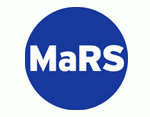Nature Communications
Published October 16, 2018 11:00 EDT (News release from Nature Research Press)
Of 57 volunteers, participants who did well in a test to identify odours performed better when they were asked to navigate between landmarks in a virtual town. Brain imaging revealed that increased thickness of the left medial orbitofrontal cortex (mOFC) and volume of the right hippocampus of the brain predicted better performance on both tasks, suggesting that the same brain regions underlie odour identification and spatial navigation ability. Additional tests showed performance on both olfactory identification and spatial memory tasks was impaired in patients with brain lesions affecting the mOFC.
Corresponding author: Véronique Bohbot, McGill University – veronique.bohbot@mcgill.ca
